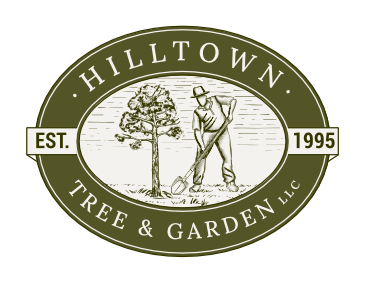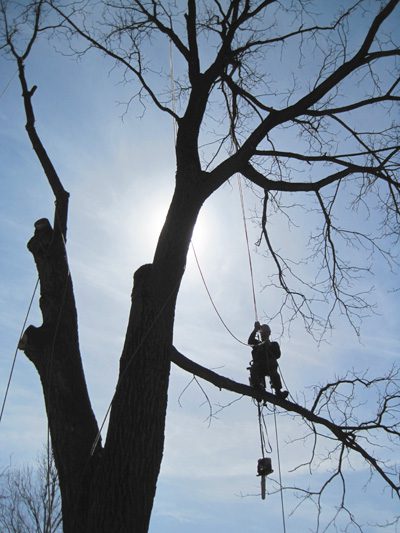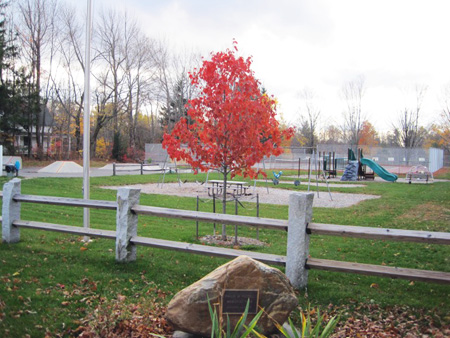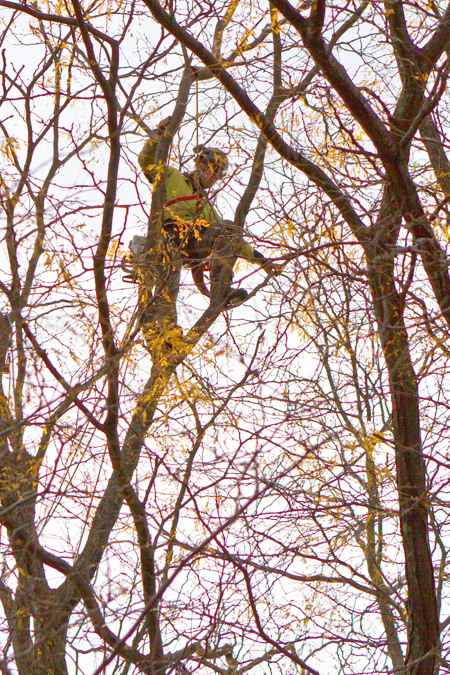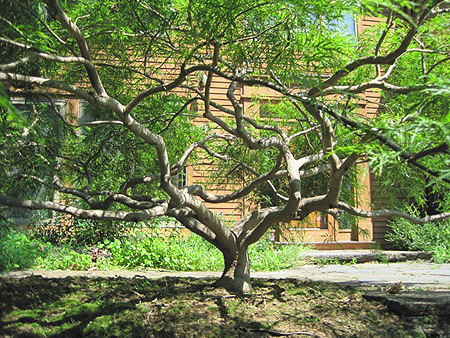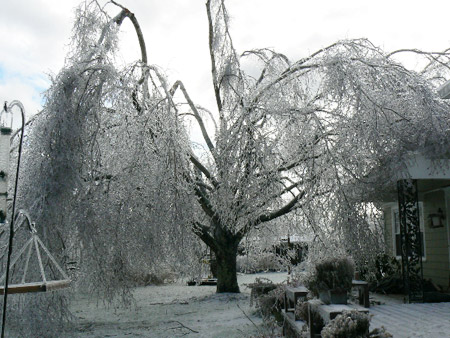Tree Care

Aboriculture
Most of Hilltown Tree & Garden’s clients are homeowners interested in preserving their trees. Many are interested in planting new ones. During the first consultation, Jim, a certified arborist and certified horticulturist, will meet with the owner and evaluate the property. They will address key tree care issues like soil condition, sun exposure, weight distribution of branches, disease prevention, natural pest control, and water drainage among others. Then they establish a course of action that meets the established goals.
Hilltown Tree & Garden advocates regular tree maintenance in order to ensure their health, structural integrity, and prolonged life span. Tree maintenance is more than just pruning. It must include a full assessment of the tree system including soil, root crown, structural integrity, and foliage. Tree Care Evaluation Form. After meeting with client, Jim prepares a treatment plan that addresses the tree’s most urgent needs that will ensure the best use of financial resources.
Mature Tree Preservation
Mature tree preservation (MTP) is a specialty of Hilltown Tree & Garden. Their MTP program is specifically designed for each individual tree because like people, no two trees are the same. This is why not all trees get the same treatment. All trees to be worked on are given a thorough on site evaluation. Based off of the evaluation Jim, a certified arborist and horticulturist, puts together a management proposal for the tree or trees to be worked on. Four main factors are considered: existing site conditions, tree structure, tree physiology & aesthetic value. Depending on what the evaluation finds Jim may recommend one or more of the following:
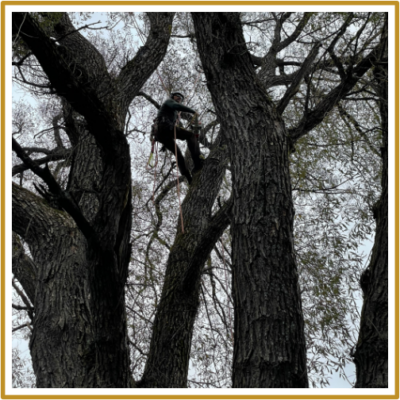
Services
Click for more information
This is the selective removal of a branch or branches. Some main reason to prune: improve its esthetics, improve its structure, to increase its vigor, to remove dangerous deadwood from its canopy, to increase a vista, to increase flowering or fruiting or to reduce the size or alter the shape of a tree. All pruning done by the arborists are in accordance with best management practices set forth by American National Standards Institute (ANSI A300)
Is the artificial bracing of a tree. A traditional cabling system is a high strength wire that is normally installed high in the trees canopy. Cables are installed to overcome a tree’s structural deficiencies. The main situation an arborist will come across where a cable is needed is when a tree has a major limb that is poorly attached to the trunk and is in jeopardy of splitting or has already split.
In many ways bracing is similar to cabling. It is used in situations where a tree has a significant structural defect. This defect is often a split crotch in a large limb. See photo. When a tree has a split crotch as shown a 1/2″ thick metal threaded rod is drilled into the tree to reinforce the split crotch. Over time the rod becomes enveloped into the tree providing years of long term stability.
Are a process by which the arborist corrects improper mulching or planting techniques done in the past. When a tree is planted to deep or mulch is piled up against the trunk the result is often the premature death of a tree. Jim estimates that over 95% of the trees he and his arborists work on are planted or mulched improperly. Depending on how many trees need a RCE will determine whether or not they will do it with hand held tools or whether on not jim uses his Air Spade. See Photo. The Air Spade blows compressed air at supersonic speed removing the soil or mulch in a minimum of time. This high tech tool has many applications in the arboriculture / horticultural field from decreasing compaction, transplanting large tree or trenching around trees at construction sites.
Most landscape trees do not live in a setting like that of a forest tree. Trees in the forest benefit from a process called nutrient recycling. This is where falling leaves, acorns, and branches are left at the trees base to compost over the years all the while feeding the tree. While most landscape trees grow on sites where the soil has been altered with compaction, the removal of topsoil and the addition of grass who competes with the tree for nutrients and water. The addition of a organic fertilizer to the root zone of a tree will give it the macro and micro nutrients it need to be vigorous, healthy and to be resistant to disease and insects.
Is the addition of organic material above the tree root zone. There are many benefits to mulching: it eliminates turf which competes for nutrients and water with the tree, it keeps the soil cool and moist & it breaks down over time providing vital nutrients. Jim normally uses a mulch called “Dark Hemlock Mix”. It looks natural, is produced locally, and is slow to break down resulting in many years of coverage.
